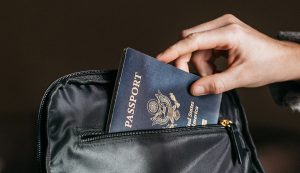In early January, Planet Biometrics reported that the Malaysian state of Penang plans to launch a CCTV surveillance system that will include facial recognition to aid police in fighting crime. According to the Borneo Post, the system will use artificial intelligence developed by IBM to enhance video feeds from 767 surveillance cameras deployed throughout the state. Facial recognition will then be used to produce matches against criminal databases with “80 to 90 percent accuracy,” Penang head police chief A. Thaiveegan told the media. System “hits” will then prompt further investigation from police officers, who will monitor the system from a central control room.
Malaysia is not the first country to use biometrics to aid law enforcement efforts. Other countries across the globe are using this technology to validate people’s identity and enforce laws. For example, China has been using facial recognition-enabled smart locks in its public housing programs in Beijing to tackle tenancy abuses. In other areas of China, police are using facial recognition to identify people in crowds and nab jaywalkers. In Europe, a national police force is using biometrics to provide mobile-based identity verification to scan fingerprints in the field and verify them against the national database in order to rapidly confirm a person’s identity. Previously, officers had to bring a person to a police station for identification. Now, when a suspect is approached and asked for their ID, the officer scans the person’s hand with a smartphone app and the image is exported and matched against the country’s database to verify the person’s identity. And in the U.S., the Federal Bureau of Investigation now has the largest biometric database in the world, according to an article in the International Business Times. The FBI isn’t the only U.S. government agency using biometrics. U.S. Customs is also using facial recognition technology to identify people who use false documents.
It’s not surprising that the use of biometrics is becoming more widespread as an identification method for criminal investigations. Biometrics provides criminal justice agencies a way to identify people accurately and in a timely manner, which are critical parts of law enforcement agencies. Without biometrics, officers may miss opportunities to apprehend criminals or run the risk of unintentionally releasing them.
But using of biometric surveillance in law enforcement has raised concerns over privacy and government use of personal data. Last year, Amazon came under fire when the American Civil Liberties Union issued a report revealing that the company sold its Rekognition computer vision services to U.S. police agencies for use as a facial recognition tool in public surveillance. But despite the backlash, which included opposition from Amazon employees, Amazon in November said it would continue to sell Rekognition, and reportedly met with U.S Immigration and Customs Enforcement last summer to discuss a potential deal.
Amazon said that privacy and data security concerns are legitimate, but the advantages biometric tools provide can be ground breaking, and that’s tough to ignore. If biometrics can reduce crime, mitigate the risks of a visitor carrying out egregious acts or protect innocent people from becoming victims, it’s certainly worthy of consideration. The bottom line: expect to see more law enforcement agencies around the globe using biometrics in coming months and years.





